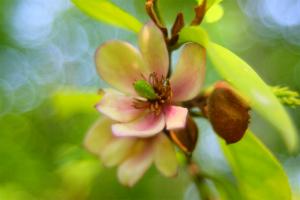1、 Curing method
1. Temperature: it likes warm climate, but it can grow in the face of severe cold and high temperature weather. The demand for temperature is different in different periods. There is little requirement for temperature in seedling stage. Low temperature can withstand minus 15 degrees and high temperature can withstand 35 degrees, so there is no need to adjust the temperature; The temperature of germination should be controlled from 18 degrees to 20 degrees, which has the highest germination rate; When the curing temperature exceeds 25 ℃, the self consumption of the plant will increase, the leaves at the base will turn yellow, the bulbs will become loose and the plant quality will be seriously reduced
2. Watering: the seedling stage is relatively drought resistant. As long as it is not in a long-term drought environment, it does not need watering. The bulb stage likes a humid growth environment, so it needs to be watered. However, it does not need watering when the bulb is just developing. It only needs watering when the bulb is up to 4cm long. The amount of watering each time does not need to be too much. It can be watered until the soil is completely wet
3. Fertilization: during the growth period, the consumption of nutrients is very large. According to the composition of fertilizer, the fertilizer should be mainly nitrogen fertilizer, supplemented by phosphorus and potassium fertilizer. If there is base fertilizer in the soil, compound fertilizer should be used when applying fertilizer. In addition, an appropriate amount of calcium can be added to the soil. When applying fertilizer, any kind of fertilizer should not be applied in excess. It should be matched in order to achieve balanced nutrition. The frequency of fertilization is once a half month
4. Light: its growth is inseparable from light. The daily light time must be more than five hours, otherwise it is prone to poor growth
2、 Breeding skills
1. Reproduction: it can reproduce by sowing. First, prepare the seedbed. After mixing the seedbed soil mixed with base fertilizer, put it into the nutrition bowl. Before sowing, pour the soil with water. After the water completely seeps in, start sowing. There are two seeds in each hole. After sowing, cover with fine soil, and then cover with plastic film. The seedlings will appear in about a week
2. Pruning: there is no specific way to prune it. It only needs to reduce the bad growing leaves during the growth process
3、 Problem diagnosis
1. When the moth infects the plant, it will affect the yield of the plant. If Plutella xylostella is found, pyrethroids can be used for pest control
2. Disease: it is prone to sudden fall disease. It is best to use sterile soil as a seedbed before planting, or use the soil disinfected with lime water before sowing, which can effectively prevent the occurrence of sudden fall disease
4、 Other issues
1. Edible: edible
2. Other functions: it can be used as medicine

 jackfruit
jackfruit snake plant
snake plant hibiscus
hibiscus hydrangea
hydrangea lavender
lavender Green roses climb al...
Green roses climb al... If you don't pay att...
If you don't pay att... Management of four g...
Management of four g...
































